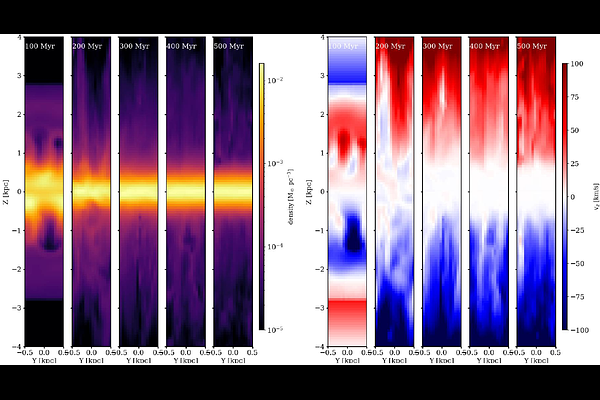Implementation of CR Energy SPectrum (CRESP) algorithm in PIERNIK MHD code. II. Propagation of Primary and Secondary nuclei in a magneto-hydrodynamical environment

Implementation of CR Energy SPectrum (CRESP) algorithm in PIERNIK MHD code. II. Propagation of Primary and Secondary nuclei in a magneto-hydrodynamical environment
Antoine Baldacchino-Jordan, Michal Hanasz, Mateusz Ogrodnik, Dominik Wóltański, Artur Gawryszczak, Andrew W. Strong, Philipp Girichidis
AbstractWe developed a new model for the production and propagation of spectrally resolved primary and secondary Cosmic Ray (CR) nuclei elements within the framework of the Cosmic Ray Energy Spectrum (CRESP) module of the PIERNIK MHD code. We extend the algorithm to several CR nuclei and demonstrate our code's capability to model primary and secondary CR species simultaneously. Primary C, N, and O are accelerated in supernova (SN) remnants. In contrast, the spallation collisions of the primary nuclei against the thermal ISM protons lead to secondary Li, Be, and B products. All the CR species evolve according to the momentum-dependent Fokker-Planck equations that are dynamically coupled to the MHD system of equations governing the evolution of the ISM. We demonstrate the operation of this system in the gravity-stratified box, reproducing the Milky Way conditions in the Sun's local environment. We perform a parameter study by investigating the impact of the SN rate, CR parallel diffusion coefficient $D_\parallel$, and the rigidity-dependent diffusion coefficient power index $\delta$. A novel result of our investigation is that the Secondary to Primary flux ratio \BtoC grows when the diffusion coefficient grows, due to the weaker vertical magnetic field resulting from CR buoyancy effects. Moreover, a higher SN rate leads to lower values of \BtoC because of stronger winds and the shorter residence of primary CR particles in dense disk regions.